The Rise Of The Marathas
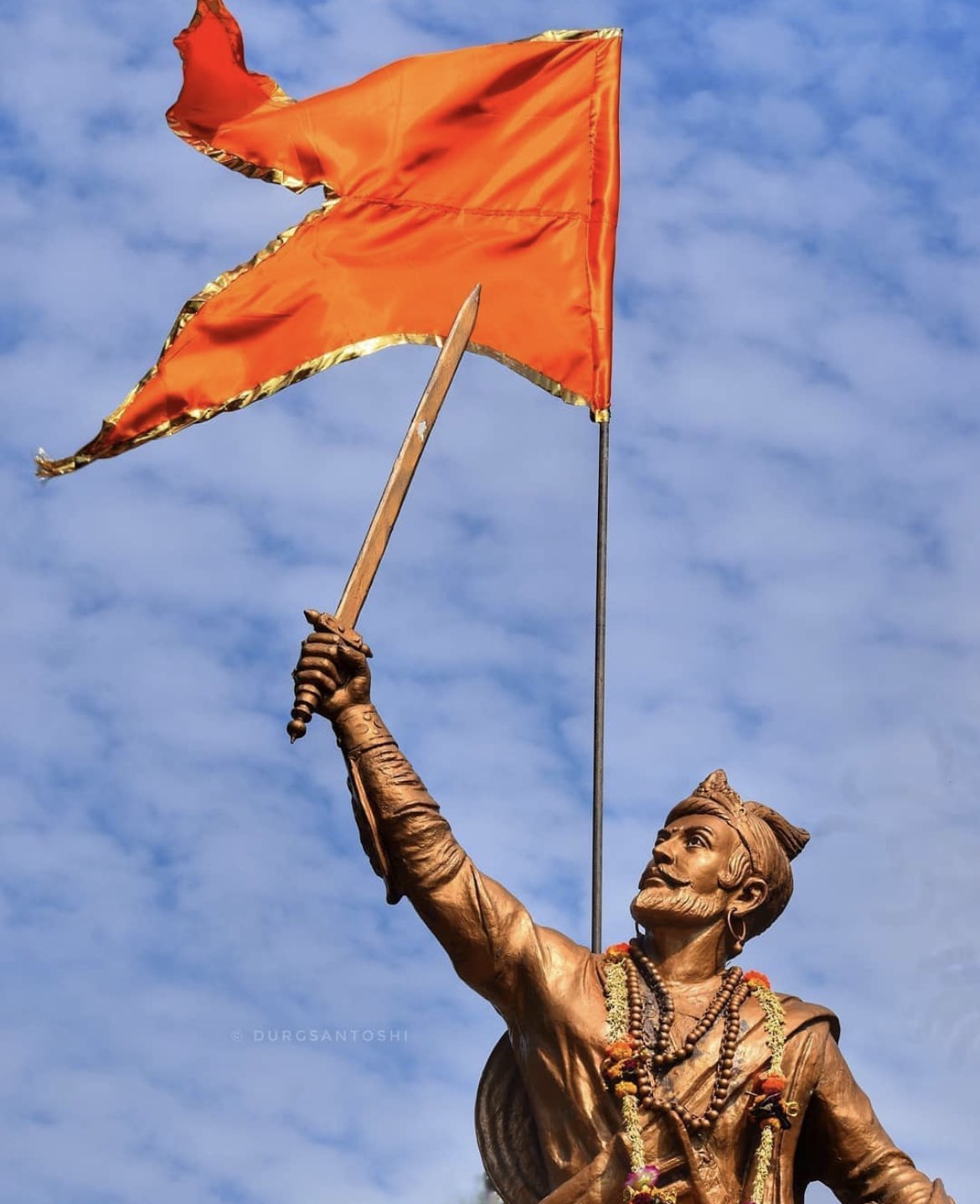 |
| Statue of Chattrapatti Shivaji Maharaj with the waving Bhagwa Dhwaj |
In the dynamic and turbulent era of 17th and 18th-century India, an influential warrior community called the Marathas emerged as a formidable and influential force. With their exceptional military capabilities, strategic acumen, and adept political maneuvering, the Marathas transcended their regional roots and ascended to become a significant empire. This blog delves deep into the captivating narrative of their ascendancy, employing the research of esteemed historians to validate crucial aspects and present a comprehensive comprehension of this transformative epoch in Indian history.
According to the renowned historian Stewart Gordon in his book "Marathas: Rise of an Empire," the Marathas originated from the Deccan region, which encompasses modern-day Maharashtra and neighboring areas. In their early days, the Marathas acted as vassals to different Deccan sultanates, utilizing this period to refine their military expertise and earn recognition as adept cavalrymen and guerrilla warriors.
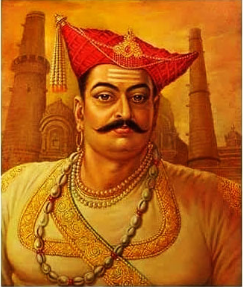 |
| Maloji Bhonsle |
The Marathas' rise to power in 17th and 18th-century India can be attributed to a series of influential figures who played significant roles in shaping the empire's trajectory. It all began with the leadership of Maloji Bhosale and his descendants, who laid the groundwork for the Marathas' territorial expansion. Maloji Bhosale, a vassal of the Deccan sultanates, contributed to the Marathas' military prowess and established their reputation as skilled horsemen and guerrilla fighters. Through a series of military exploits, the Marathas gradually expanded their territory, solidifying their position as a regional power.
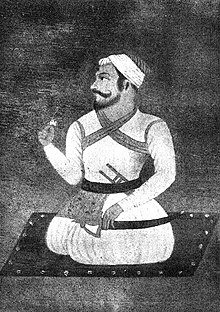 |
| Shahaji Bhonsle |
Following Maloji's footsteps, his son Shahaji Bhosle emerged as a prominent figure within the Maratha ranks. Shahaji's military acumen and administrative abilities further propelled the empire's expansion. He successfully forged alliances with influential figures in the Deccan, leveraging these partnerships to strengthen the Marathas' military capabilities and extend their control over new territories. Shahaji's campaigns against Golconda and Vijaynagar showcased his strategic brilliance, bolstering the Marathas' position in the region. (Till then though the Marthas were extremely influential and powerful they were not independent but simply powerful nobles serving various kings at various times to serve their own interest but this changed with the rise of Shivaji who proclaimed himself king and established an empire going against not only the deccan sultanates whom his ancestors had served but also the mughals who were the undisputed superpower within the Indian subcontinent.)
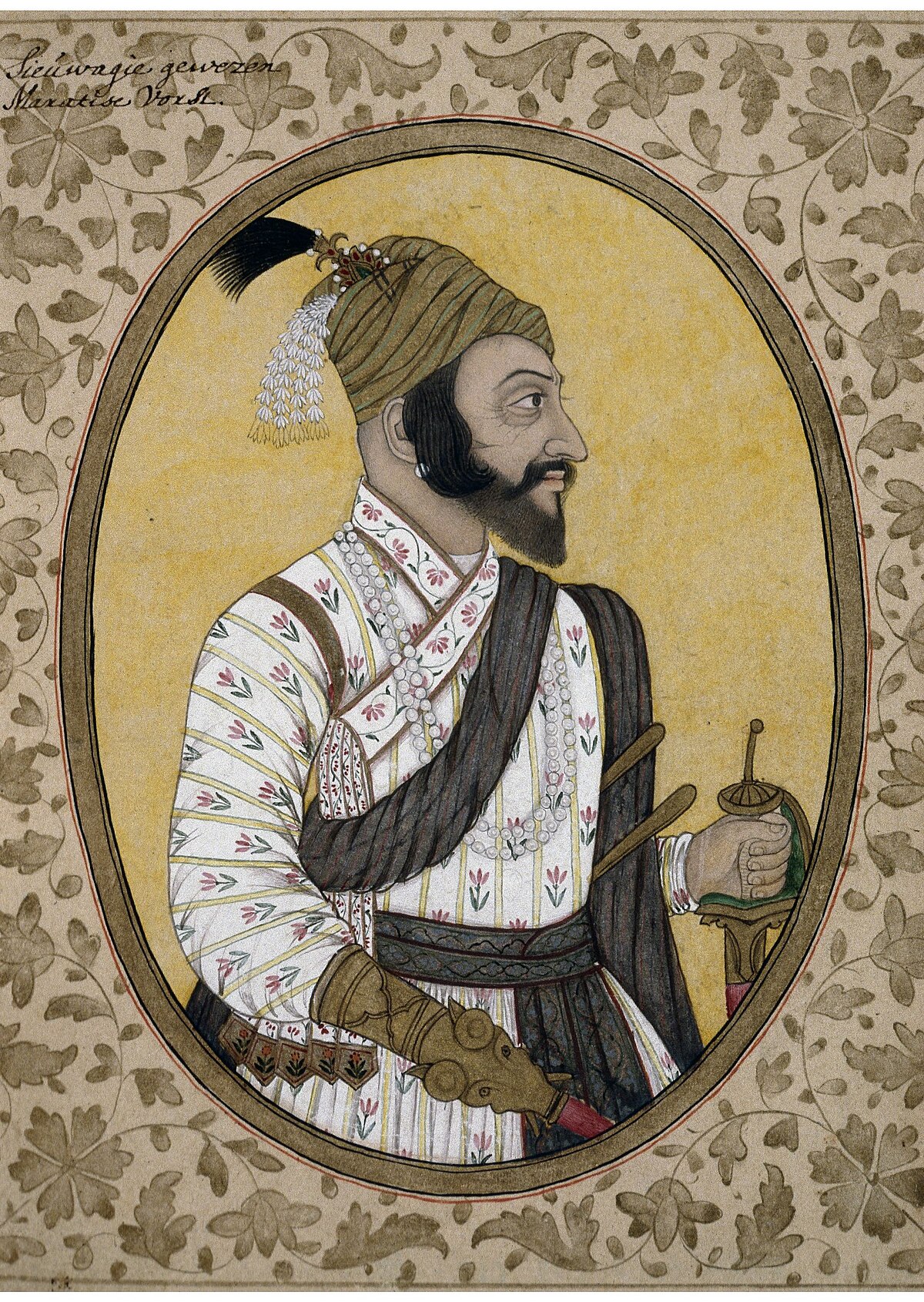 |
| Chattrapatti Shivaji Maharaj |
At the pinnacle of the Marathas' rise emerged the legendary warrior-king, Chhatrapati Shivaji Maharaj, whose impact on Indian history remains unparalleled. Born in 1630, Shivaji inherited a small jagir (landholding) from his father and swiftly displayed remarkable military prowess and administrative acumen. Historian Sir Jadunath Sarkar, in his meticulous work "Shivaji and His Times," offers a comprehensive account of Shivaji's remarkable journey, emphasizing his audacity, strategic brilliance, and his extraordinary ability to inspire unwavering loyalty among his followers.
Shivaji's establishment of the Maratha Empire was marked by his ingenious military tactics, the construction of fortified hill forts, and his talent for forging alliances with local chiefs and discontented nobles. The capture of strategically vital forts such as Raigad, Pratapgad, and Sinhagad served as shining examples of his military genius, providing a solid foundation for further territorial expansion. As noted by historian R.C. Majumdar in "The Marathas: 1600-1818," Shivaji's leadership and visionary approach laid the groundwork for the Marathas' ascendance as a dominant power in the Deccan.
Shivaji's rise to power can be attributed to a multitude of factors. Firstly, he adeptly capitalized on the prevailing political fragmentation and weakened central authority in the Deccan. Exploiting the decline of the Mughal Empire and the disarray among regional sultanates, Shivaji skillfully carved out his own sphere of influence, consolidating his authority.
Secondly, Shivaji showcased exceptional military acumen through his innovative strategies and tactics. His forces excelled in guerrilla warfare, utilizing hit-and-run techniques and swift cavalry attacks to confound his opponents. This unconventional approach not only bewildered his enemies but also solidified his reputation as an indomitable warrior.
Moreover, Shivaji's administrative prowess was instrumental in his rise. He established a well-structured administrative system, emphasizing efficient revenue collection, fair dispensation of justice, and the promotion of local governance. Shivaji's administration was characterized by a sense of inclusivity, where subjects were treated equitably regardless of their caste or religion. This approach fostered a sense of unity and loyalty among diverse communities, contributing to his enduring popularity.
Additionally, Shivaji's diplomatic finesse played a crucial role in his ascent. He skillfully formed alliances with local chiefs and disgruntled nobles who sought to challenge the prevailing order. By building a network of loyal supporters, Shivaji not only expanded his territorial influence but also bolstered his military strength.
Shivaji's rise to power symbolized a harmonious blend of audacity, strategic brilliance, and his exceptional ability to inspire unwavering loyalty. Through his military triumphs, strategic fortifications, effective governance, and adept diplomacy, Shivaji laid the foundation for the Marathas' transformation from a regional force to a dominant empire.
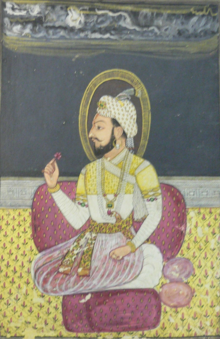 |
| Chattrapatti Sambhaji Maharaj |
Sambhaji, the eldest son of Shivaji, succeeded his father as the ruler of the Maratha Empire. He is remembered as a courageous and valiant king, known for his military prowess and his efforts to uphold the Maratha legacy. Sambhaji faced numerous challenges during his reign, including external invasions, internal conflicts, and political instability.
As a ruler, Sambhaji continued his father's military campaigns and expanded the Maratha Empire's territorial reach. He led several successful military expeditions, striking fear into the hearts of his enemies. Sambhaji's military strategy combined both conventional warfare and guerrilla tactics, which allowed him to effectively counter the powerful Mughal forces led by Aurangzeb.
Despite his military achievements, Sambhaji's reign was marked by internal struggles within the Maratha court. His decision to appoint non-Brahmin officials in prominent positions and his close association with individuals considered disreputable by the conservative elements of the society, drew criticism from some factions within the empire. This led to factionalism and conflicts, causing a divide among the nobility and the administration.
Sambhaji's reign was also fraught with external challenges. Aurangzeb, the Mughal emperor, launched multiple campaigns to subdue the Marathas and bring them under Mughal control. Sambhaji fiercely resisted these invasions, engaging in fierce battles to defend his empire. However, in 1689, Sambhaji was captured by Aurangzeb's forces, and despite enduring immense torture, he refused to renounce his Maratha identity and convert to Islam. Eventually, Sambhaji was executed, becoming a martyr and symbol of resistance for the Maratha people.
While Sambhaji's reign was relatively short-lived, his legacy as a warrior and his unwavering commitment to the Maratha cause left a lasting impact on the empire. His defiance against the Mughal Empire and his sacrifices for his kingdom earned him a revered place in Maratha history. Sambhaji's bravery and determination continue to inspire generations, cementing his status as one of the most celebrated figures in the Maratha pantheon. Following his demise, the empire faced internal struggles that led to a shift in power from the Chattrapattis to the Peshwas. This marked a period of political consolidation and expansion under the Peshwas, who served as the prime ministers of the Maratha state. During this era, the Maratha Empire witnessed significant developments.
 |
| Peshwa Balaji Viswanath |
Balaji Vishwanath's diplomatic finesse allowed the Marathas to establish strategic alliances with various regional powers, bolstering their political and military strength. Through these alliances, the Marathas were able to extract tributes and concessions from neighboring territories, further enhancing their resources and stature. This diplomatic maneuvering not only solidified the Marathas' position as a dominant power but also facilitated their territorial expansion beyond their traditional strongholds in the Deccan region.
Under Balaji Vishwanath's leadership, the Marathas effectively consolidated their political control over large parts of India, establishing a network of vassal states and tributary arrangements. This expansion into northern India enabled the Marathas to exert their influence over vast territories and project their power across the subcontinent.
The period under the Peshwas, particularly the reign of Balaji Vishwanath, witnessed a transformative chapter in Maratha history. Through his diplomatic acumen and strategic alliances, the Marathas were able to consolidate their political authority, extract tributes, and expand their influence across northern India, marking a significant phase of growth for the empire.
 |
| Peshwa Balaji Baji Rao 1 |
The Marathas, under the leadership of the Peshwas, experienced a remarkable expansion that culminated in the reign of Baji Rao I. This period witnessed the zenith of Maratha power, as Baji Rao I, often hailed as the "Napoleon of India," spearheaded the empire's territorial growth and strategic dominance. Renowned historian Surendra Nath Sen, in his comprehensive work "The Marathas," provides a vivid portrayal of Baji Rao I's military campaigns and political maneuvers, highlighting his exceptional strategic brilliance and ambitious vision.
Baji Rao I's military prowess and audacious tactics propelled the Marathas' conquests deep into northern India. He inflicted decisive defeats on the Mughal Empire and other regional powers, expanding Maratha territories and exerting their influence over vast regions. His lightning-fast cavalry raids and swift maneuvers caught his adversaries off guard, allowing him to secure crucial victories and expand Maratha control.
One of the notable conquests of Baji Rao I was the province of Gujarat. In 1732, he led a massive Maratha army into Gujarat, defeating the local rulers and incorporating the region into the Maratha dominion. This conquest established Maratha control over important trading centers and maritime ports, further enhancing their economic and political influence.
Baji Rao I also turned his attention towards the eastern territories, particularly the Nizam of Hyderabad. Through a series of successful military campaigns, he secured Maratha control over significant parts of the Deccan region. These conquests expanded the Marathas' influence into the south, positioning them as a formidable power across a vast stretch of India.
Furthermore, Baji Rao I exhibited remarkable political acumen in addition to his military successes. He skillfully exploited existing rivalries and alliances, forging diplomatic relationships that bolstered the Marathas' influence and secured their territorial gains. His adept navigation of complex political landscapes further solidified the Marathas' dominance in the region.
Notably, Baji Rao I's campaigns extended even as far as Delhi, the capital of the declining Mughal Empire. In 1737, he launched a daring expedition, pushing deep into Mughal territories and inflicting a resounding defeat on the Mughal forces. Baji Rao I's triumphant march into Delhi not only brought humiliation to the Mughals but also solidified Maratha dominance in northern India.
Baji Rao I's reign marked a transformative phase for the Marathas, as their empire reached unprecedented heights. His military campaigns and political maneuvers propelled the Marathas to the forefront of Indian politics, challenging the long-standing authority of the Mughal Empire and establishing the Marathas as a formidable force in northern India. The legacy of Baji Rao I as the "Napoleon of India" continues to resonate in the annals of Indian history, underscoring the Marathas' remarkable rise and their enduring impact on the Indian subcontinent.
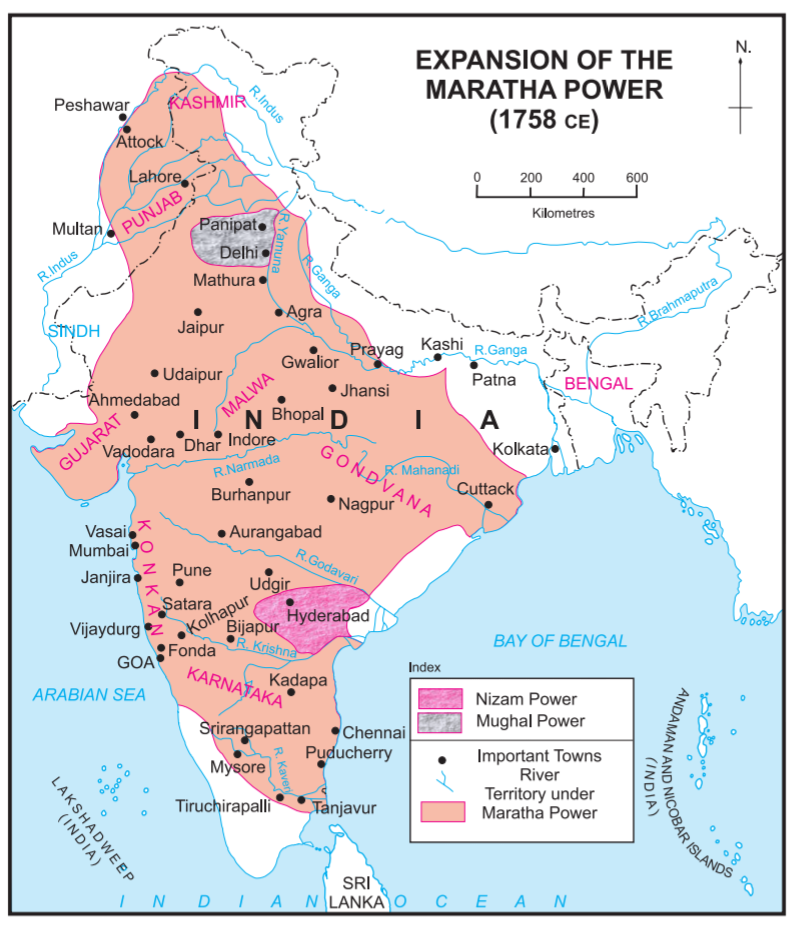 |
| Maratha Empire in 1758 CE |
The Marathas' dominance in the 18th century firmly established them as one of the most formidable powers in India. Their sphere of influence expanded across vast territories, stretching from the Deccan to regions encompassing present-day Gujarat, Madhya Pradesh, and Rajasthan. Esteemed historian Stewart Gordon, in his comprehensive work "The Marathas: 1600-1818," highlights the pivotal economic and administrative reforms implemented by the Marathas, fostering a climate of prosperity and stability within their domains.
Under Maratha rule, the implementation of astute economic policies and administrative reforms brought about significant transformations. The Marathas sought to streamline revenue collection, encourage trade and commerce, and promote agricultural growth. They introduced a system of land revenue that was more equitable and efficient, providing incentives for agricultural productivity and fostering economic development. The Marathas also took measures to improve infrastructure, such as constructing roads and irrigation networks, which facilitated trade and boosted economic activity.
In addition to their economic reforms, the Marathas implemented administrative measures that contributed to the stability and effective governance of their territories. They established a decentralized administrative system, granting considerable autonomy to local chieftains and officials. This approach allowed for efficient local governance and the preservation of existing social structures. Furthermore, the Marathas invested in the military, building a formidable army that not only safeguarded their territories but also projected their power across the region.
The Marathas' emphasis on economic prosperity and administrative efficiency enabled them to create a stable and prosperous domain. This, in turn, attracted merchants, artisans, and skilled professionals, contributing to the overall growth and development of Maratha territories. The economic and administrative reforms implemented by the Marathas played a significant role in solidifying their status as a dominant power in India during the 18th century.
The Marathas' rise to power and their subsequent achievements underscore their influence on Indian history. Their territorial expansions, coupled with their focus on economic and administrative reforms, fostered an era of relative stability and prosperity within their domains. The legacy of the Marathas as an influential force continues to shape the historical narrative of India, reflecting their significant contributions to the economic, administrative, and political landscape of the subcontinent.
Despite facing internal power struggles and external challenges from rival states and European powers, the Marathas persevered and maintained their influential position for several decades. Through their formidable military prowess and efficient administrative systems, they left an indelible mark on Indian politics, earning both awe and admiration.
The Marathas' military might was a defining aspect of their power. They possessed a well-trained and disciplined army, renowned for its swift cavalry, skilled infantry, and efficient artillery. Under the leadership of talented generals and commanders, such as Baji Rao I and his successors, the Marathas engaged in numerous successful military campaigns. Their victories against formidable adversaries, including the Mughal Empire and regional powers, solidified their reputation as a force to be reckoned with. These military triumphs showcased the Marathas' tactical brilliance, resilience, and ability to adapt to changing circumstances.
In addition to their military strength, the Marathas' administrative systems played a crucial role in sustaining their influence. They developed an efficient and decentralized administrative structure, granting significant autonomy to local chieftains and officials. This approach not only facilitated effective governance but also allowed for the preservation of local customs and traditions. The Marathas also implemented revenue reforms, encouraging agricultural productivity, trade, and commerce. Their administrative prowess fostered stability, economic growth, and prosperity within their territories.
Despite the challenges they faced, the Marathas remained a force to be reckoned with in Indian politics. Their military triumphs and efficient administrative systems left an enduring legacy that continues to shape the historical narrative of India. The Marathas' ability to overcome internal strife and confront external threats is a testament to their resilience and the enduring impact they had on the political landscape of the subcontinent.
The enduring legacy of the Marathas is deeply intertwined with the history and culture of Maharashtra and India as a whole. From their humble beginnings as a regional power, the Marathas ascended to the status of an empire, leaving an indelible mark on the narrative of Indian history. Their military strategies, administrative practices, and cultural contributions have had a profound and lasting influence.
The Marathas' ascent to power is a testament to their resilience and adaptability. In the face of numerous challenges and rivalries, they exhibited remarkable tenacity and resourcefulness. Through their military prowess, they not only defended their territories but also expanded their influence through strategic conquests. The Marathas' ability to adapt to the changing dynamics of the era allowed them to thrive in a tumultuous political landscape.
Furthermore, the Marathas made significant cultural contributions that continue to shape the fabric of Indian society. Their patronage of arts, literature, and architecture resulted in the creation of magnificent structures, vibrant artistic traditions, and a rich cultural heritage. The Marathas' influence extended beyond politics and military might, leaving an indelible imprint on the cultural landscape of Maharashtra and India.
The legacy of the Marathas serves as a testament to their enduring impact and the significant role they played in shaping the course of Indian history. Their resilience, ingenuity, and ability to adapt to changing circumstances enabled them to rise from a regional power to an empire. The Marathas' military strategies, administrative practices, and cultural contributions continue to resonate, ensuring their place in the collective memory of Maharashtra and the broader historical narrative of India.
In conclusion, the remarkable rise of the Marathas from a modest regional power to a formidable empire stands as a testament to their exceptional military prowess, shrewd political maneuvering, and visionary leadership. Through the insights provided by esteemed historians, we have delved into the origins of the Marathas, the pivotal role of Chhatrapati Shivaji Maharaj, and the subsequent expansion under the Peshwas. The Marathas' indomitable presence in the Deccan and beyond has left an indelible mark on the tapestry of Indian history, encapsulating their enduring legacy as a dominant force that shaped the course of the nation.
The Marathas' ascent was fueled by their unwavering determination, strategic brilliance, and an unyielding spirit of independence. Chhatrapati Shivaji Maharaj's audacious exploits and administrative acumen laid the foundation for the Marathas' ascent, inspiring loyalty among his followers and forging an indomitable spirit of Maratha identity. Under the leadership of the Peshwas, particularly Baji Rao I, the Marathas experienced an unprecedented expansion, extending their dominion across vast territories and challenging the established power structures of the time.
The Marathas' reign over the Deccan and their successful forays into northern India showcased their military might and political finesse. Their ability to forge alliances, extract tributes, and expand their influence highlighted their strategic brilliance and capacity for adaptation. The Marathas' legacy reverberates through the ages, as their contributions in governance, military tactics, and cultural patronage continue to shape the fabric of Indian society.
The rise of the Marathas remains a testament to the resilience, ingenuity, and unwavering spirit of a people determined to forge their own destiny. Their remarkable journey from a regional power to an empire stands as a defining chapter in Indian history, forever etching their name in the annals of greatness. The Marathas' legacy serves as a reminder of the transformative power of visionary leadership, unwavering determination, and the enduring impact a united people can have on the course of a nation's history.
Bibliography
- Gordon, Stewart. "The Marathas, 1600-1818." Cambridge University Press, 1993.
- Patil, B.R. "Marathas and Their Administration." Balkrishna R. Patil, 1977.
- Eaton, Richard M. "The Marathas: 1600-1818." Cambridge University Press, 2005.
- Barua, Pradeep. "The Maratha Empire: A Military History." Himalayan Books, 2010.
- Ranade, Mahadev Govind. "The Rise of the Maratha Power: 1760-1787." Oxford University Press, 1900.
- Saraswathi, S.K. "The Maratha Empire: History and Culture." Bharatiya Vidya Bhavan, 1998.
Comments
Post a Comment